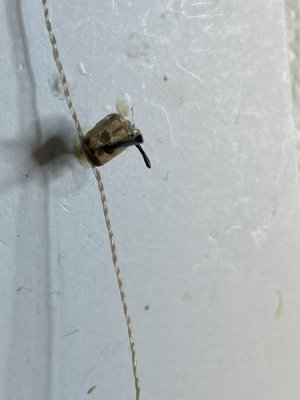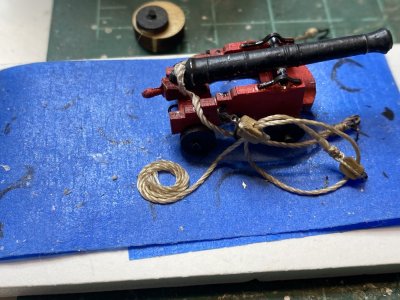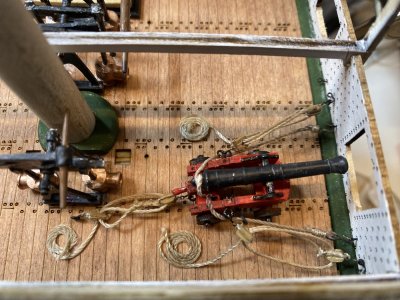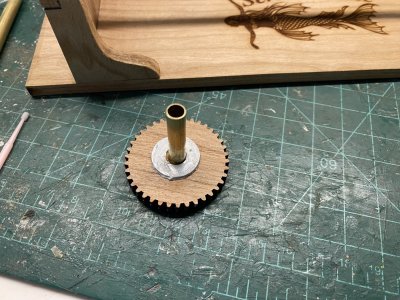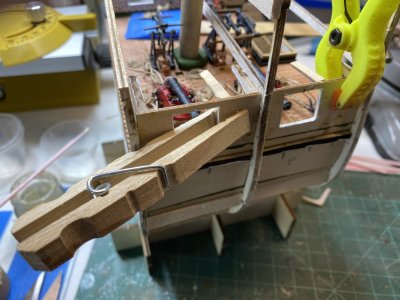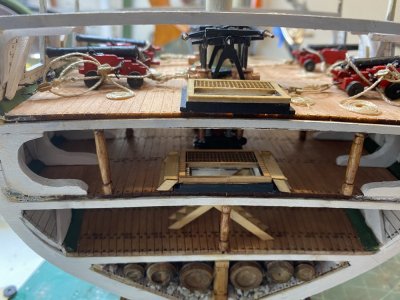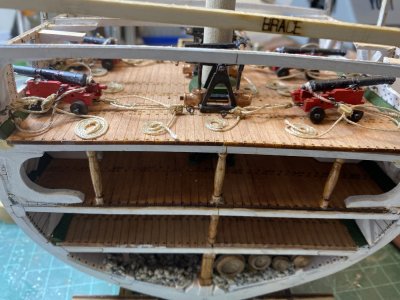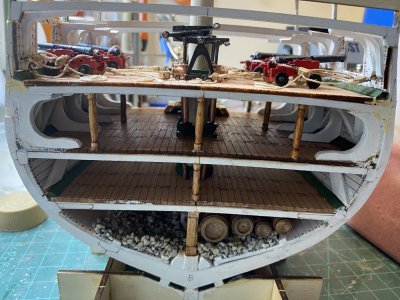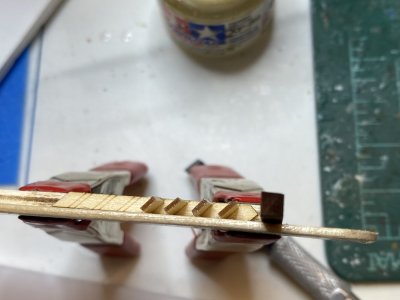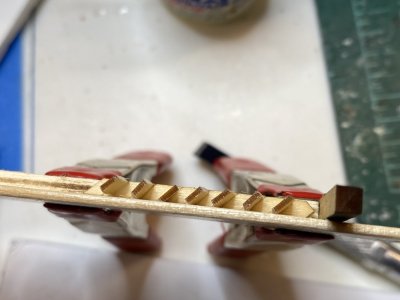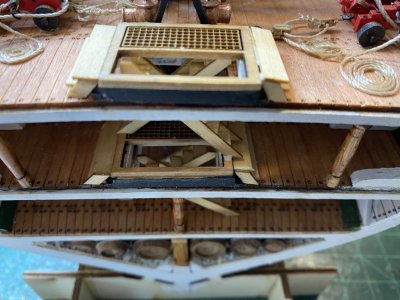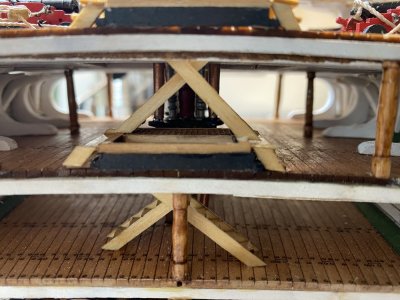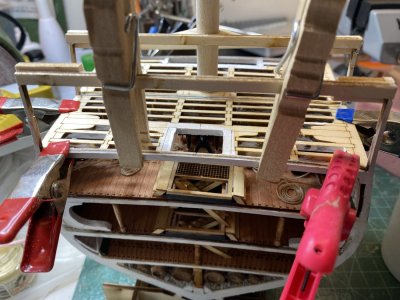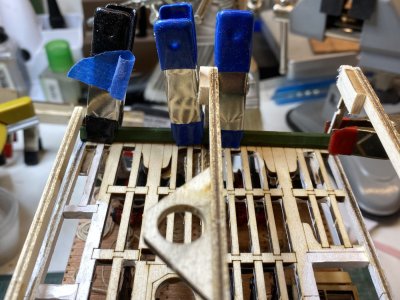Next up is the gun tackle for the cannons. Three sets will be needed for each cannon 2 gun tackles that would haul the cannon into firing position and change its aiming point and a train tackle that would be used to pull the cannon back into the ship. For this 12 sets of blocks would be used, 12 single and 12 double. I started by enlarging the holes in the blocks so the line would actual pass through it. Using a drill vise i gently enlarged the holes and made sure they were free of any obstructions. some blocks needed small hooks seized to them. Some needed a hook and a line seized on opposite ends. I started by using the small thread I was using for seizing the other lines and tied a small hook onto it. I placed a small piece of wire onto some foam board to hold the block as I tied onto it. A nearby piece of doubled up tape was helpful in holding loose ends of line that seemed to want to fly away on it's own. for the block that required a line seized onto it, I also tucked a length of line to the seizing thread.
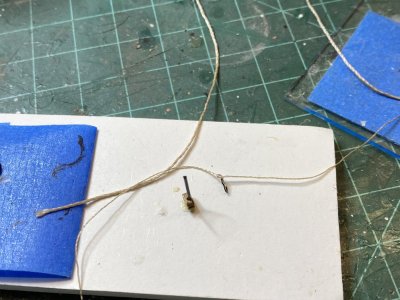
The line was then positioned and tied tightly using a square knot.
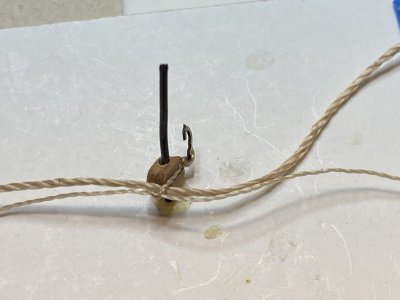
After this I help the hook with a clamp and seized the line with the same length of line I used to seize the hook onto the block.

I used 5 or 6 half hitches around the line and then placed a drop of glue on the seized area. After it dried I cut off the excess lines.


The line was then positioned and tied tightly using a square knot.

After this I help the hook with a clamp and seized the line with the same length of line I used to seize the hook onto the block.

I used 5 or 6 half hitches around the line and then placed a drop of glue on the seized area. After it dried I cut off the excess lines.




